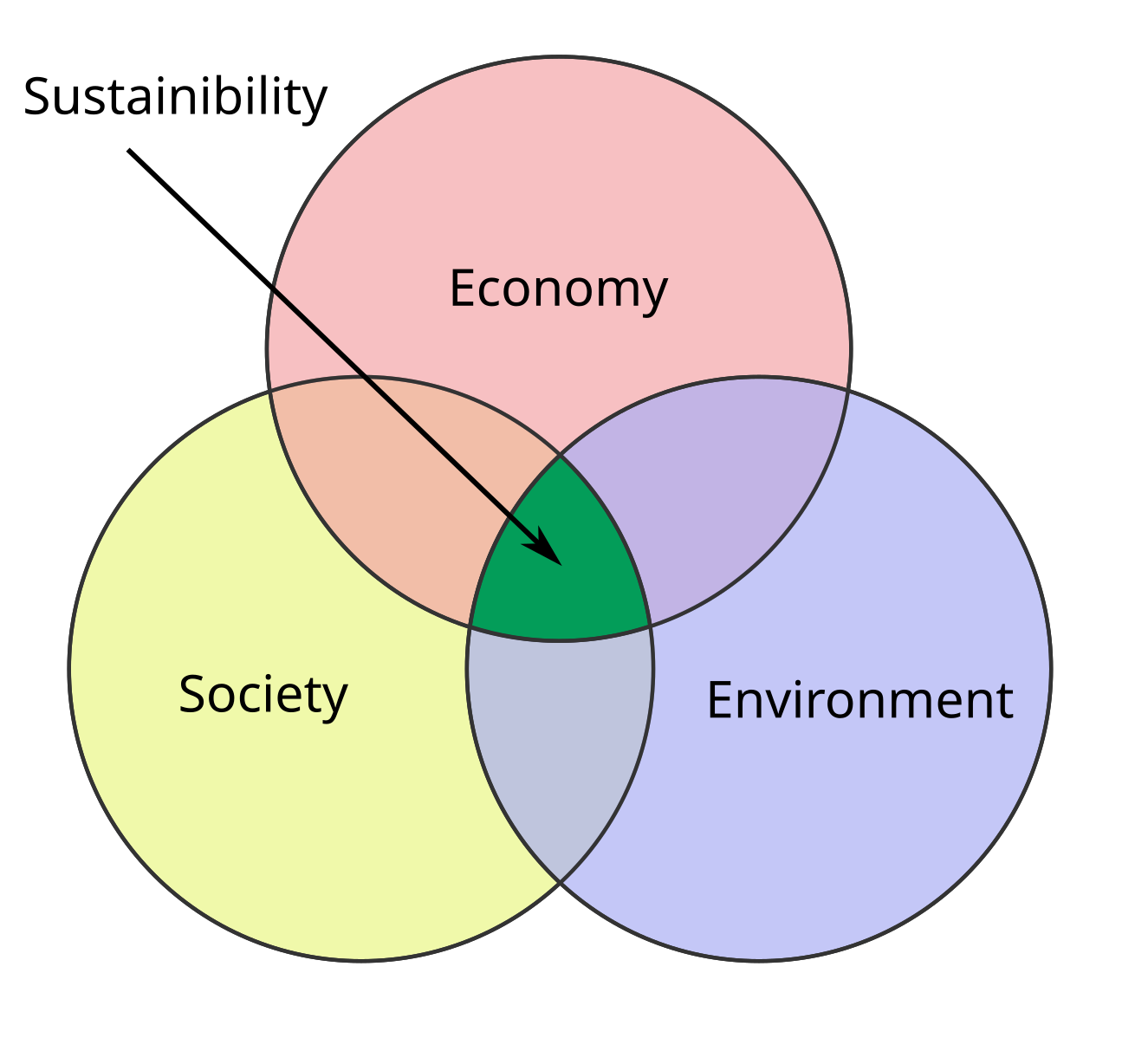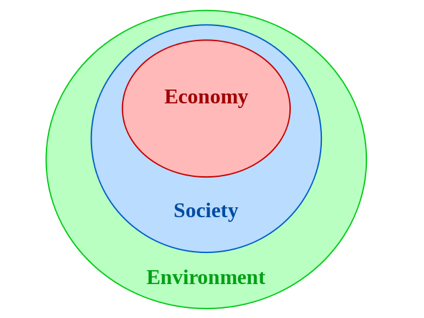IB Syllabus focus:
‘Applying sustainability to progress: meet present needs without compromising future generations (Brundtland, 1987), balancing economic stability, social equity, and ecological integrity.’
Sustainable development is a cornerstone of modern environmental thinking. It emphasises balancing human progress with ecological limits, ensuring that meeting today’s needs does not undermine future generations’ opportunities.
The Brundtland Report (1987)
The Brundtland Report, formally titled Our Common Future, was published by the World Commission on Environment and Development in 1987. It introduced the widely accepted definition of sustainable development.
Sustainable Development: Development that meets the needs of the present without compromising the ability of future generations to meet their own needs.
This definition has shaped global environmental policy, providing a foundation for frameworks such as the UN Sustainable Development Goals (SDGs).
Core Principles of Sustainable Development
Sustainable development involves balancing three interdependent pillars:

Venn diagram illustrating sustainability at the intersection of the environmental, social, and economic pillars, highlighting trade-offs and synergies among them. The centre overlap represents integrated decision-making consistent with the Brundtland approach. Source.
Economic stability: generating growth, employment, and innovation without overusing resources.
Social equity: promoting fairness, justice, health, education, and reducing inequality.
Ecological integrity: protecting natural systems, biodiversity, and ecological processes essential for life.
These pillars interact and cannot be treated in isolation. A collapse in one often destabilises the others.
Environmental Dimension
The environmental pillar ensures that natural resources are used within regenerative limits. This includes maintaining clean air, freshwater, soils, and biodiversity.
Key priorities:
Conserving renewable resources.
Reducing pollution and greenhouse gas emissions.
Maintaining ecosystem services that support agriculture, industry, and human well-being.
Social Dimension
The social pillar emphasises equity and inclusion. Development must benefit all groups, particularly vulnerable populations.
Key priorities:
Access to education, healthcare, and housing.
Reducing gender and income inequalities.
Empowering communities to make sustainable choices.
Ensuring cultural respect and diversity.
Economic Dimension
The economic pillar focuses on generating wealth without degrading environmental or social systems.
Key priorities:
Promoting green jobs and innovation.
Integrating environmental costs into economic accounting.
Supporting sustainable production and consumption patterns.
Encouraging responsible investment and fair trade.
Weak vs. Strong Sustainability
Within the Brundtland framework, scholars debate weak and strong sustainability:

Nested model of strong sustainability showing the economy inside society, both contained by the environment. It emphasises non-substitutability of critical natural capital and ecological limits, aligning with the Brundtland-inspired systems view. Source.
Weak sustainability: Natural capital (forests, water, ecosystems) can be substituted by human-made capital (technology, infrastructure).
Strong sustainability: Natural systems are irreplaceable and must be preserved regardless of technological advances.
This distinction shapes how societies design policies and assess development projects.
Intergenerational Equity
At the heart of Brundtland’s vision is intergenerational equity. This principle recognises that future generations should inherit a planet capable of sustaining life and providing opportunities.
Intergenerational Equity: The fair distribution of resources, opportunities, and environmental quality between present and future generations.
This idea encourages long-term thinking beyond short-term political or economic gains.
Practical Applications of Brundtland’s Definition
Brundtland’s influence is visible in global policies:
United Nations Sustainable Development Goals (SDGs) (2015): A framework of 17 goals addressing poverty, inequality, climate change, and resource protection.
Rio Earth Summit (1992): Advanced sustainable development into international treaties such as the Convention on Biological Diversity.
Corporate sustainability strategies: Businesses now report on environmental and social impacts alongside financial performance.
Challenges to Implementation
Despite widespread acceptance, applying sustainable development faces several challenges:
Conflict between economic growth and environmental protection: Industrial expansion often damages ecosystems.
Short-term political cycles: Governments may prioritise immediate economic gains over long-term sustainability.
Global inequalities: Developed nations have historically consumed more resources, while developing nations face pressure to catch up.
Measuring sustainability: Traditional indicators like GDP do not account for environmental degradation.
Brundtland and Global Justice
Brundtland’s framework also highlights environmental justice and equity between nations. Developing countries argue that they should not bear disproportionate responsibility for problems caused mainly by industrialised nations. Sustainable development must therefore include:
Fair distribution of resources.
Financial and technological support for poorer nations.
Shared responsibility for addressing climate change.
Key Takeaways for IB ESS Students
Sustainable development links environment, society, and economy into a single framework.
The Brundtland Report (1987) is the foundation of the modern concept.
Balancing present needs with future security requires long-term planning and global cooperation.
Ongoing debates around weak vs. strong sustainability and justice reflect the complexity of real-world implementation.
FAQ
The Brundtland Report was released during rising global concerns about pollution, deforestation, and climate change. At the same time, there was pressure for economic growth, particularly in developing countries.
The report sought to link environmental protection with human development, moving away from the idea that growth and sustainability were opposing goals.
The Brundtland Report directly inspired the 1992 Rio Earth Summit, which established Agenda 21 and conventions on biodiversity and climate change.
It also laid the groundwork for the concept of sustainable development being embedded into the Millennium Development Goals (2000) and later the Sustainable Development Goals (2015).
The definition is broad, allowing for multiple interpretations by governments and businesses.
Critics argue it enables weak sustainability approaches that permit continued resource exploitation.
Others see it as politically useful but scientifically imprecise, making measurement difficult.
In developed countries, the focus often lies on reducing consumption and transitioning to renewable energy.
In developing countries, sustainable development emphasises poverty reduction, food security, and equitable access to resources, while still addressing environmental concerns.
The Brundtland Report introduced the moral responsibility to protect resources for future generations.
This is linked to the idea that environmental degradation today limits the opportunities and freedoms of tomorrow’s populations, making sustainability an ethical as well as practical obligation.
Practice Questions
Question 1 (2 marks)
State the definition of sustainable development as introduced in the Brundtland Report (1987).
Mark scheme:
1 mark for mentioning that development should meet the needs of the present.
1 mark for mentioning that it should not compromise the ability of future generations to meet their own needs.
Question 2 (5 marks)
Explain how the three pillars of sustainable development (environmental, social, economic) interact with each other, using one example of potential conflict or synergy.
Mark scheme:
1 mark for identifying the environmental pillar (resource protection/ecosystem integrity).
1 mark for identifying the social pillar (equity, inclusion, well-being).
1 mark for identifying the economic pillar (growth, employment, production).
1 mark for explaining how at least two pillars interact (e.g., economic development depending on environmental stability).
1 mark for a relevant example of conflict (e.g., industrial growth harming ecosystems) or synergy (e.g., renewable energy creating green jobs while reducing emissions).

